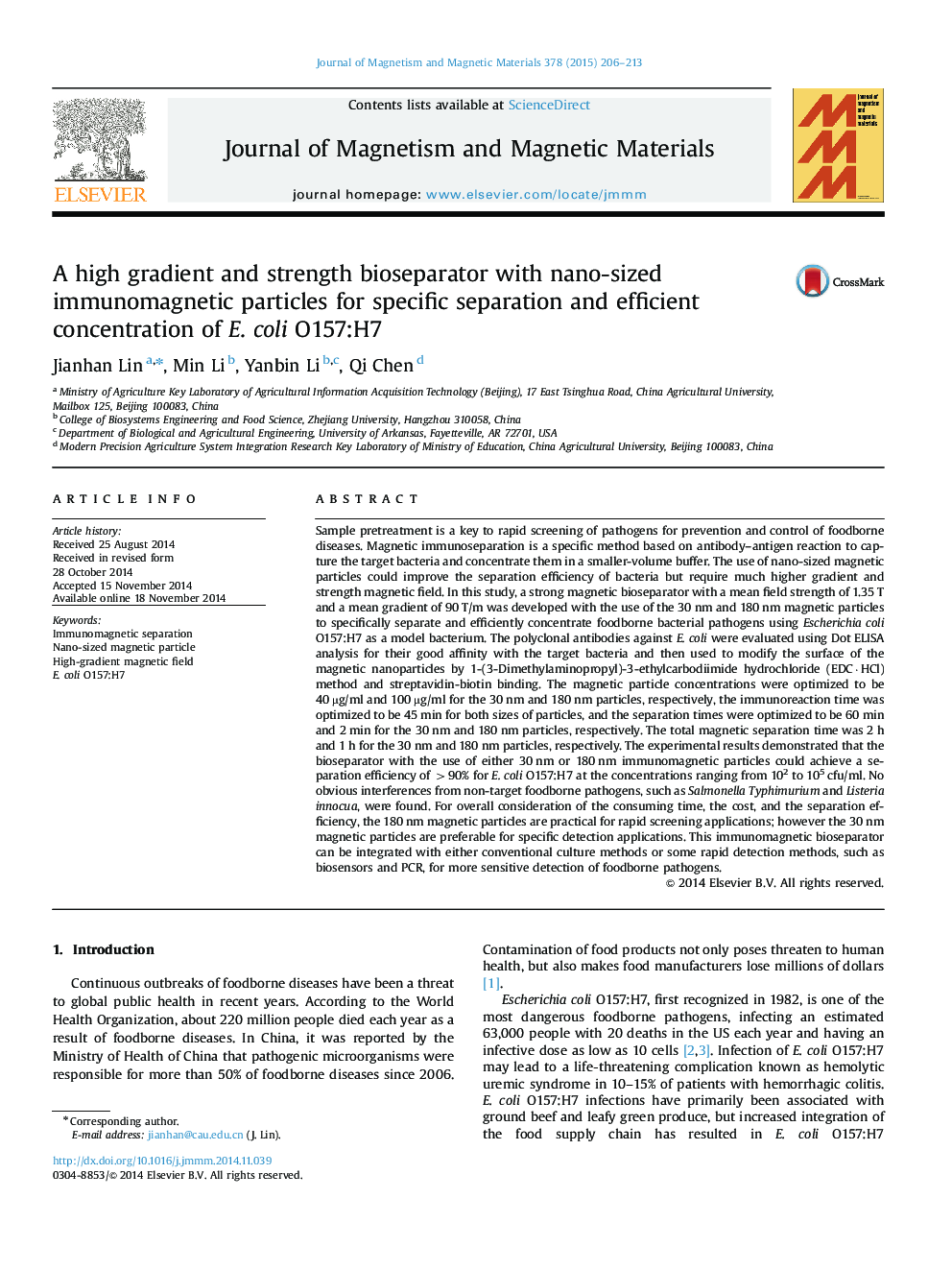| Article ID | Journal | Published Year | Pages | File Type |
|---|---|---|---|---|
| 1799306 | Journal of Magnetism and Magnetic Materials | 2015 | 8 Pages |
•A portable high gradient and high strength magnetic bioseparator was developed.•This bioseparator can specifically separate ≥90% of E. coli O157:H7 in 2 h.•This system has an enrichment ratio of ~10 in separation of E. coli O157:H7.•Parameters for two nano-sized magnetic particles were optimized and compared.
Sample pretreatment is a key to rapid screening of pathogens for prevention and control of foodborne diseases. Magnetic immunoseparation is a specific method based on antibody–antigen reaction to capture the target bacteria and concentrate them in a smaller-volume buffer. The use of nano-sized magnetic particles could improve the separation efficiency of bacteria but require much higher gradient and strength magnetic field. In this study, a strong magnetic bioseparator with a mean field strength of 1.35 T and a mean gradient of 90 T/m was developed with the use of the 30 nm and 180 nm magnetic particles to specifically separate and efficiently concentrate foodborne bacterial pathogens using Escherichia coli O157:H7 as a model bacterium. The polyclonal antibodies against E. coli were evaluated using Dot ELISA analysis for their good affinity with the target bacteria and then used to modify the surface of the magnetic nanoparticles by 1-(3-Dimethylaminopropyl)-3-ethylcarbodiimide hydrochloride (EDC·HCl) method and streptavidin-biotin binding. The magnetic particle concentrations were optimized to be 40 µg/ml and 100 µg/ml for the 30 nm and 180 nm particles, respectively, the immunoreaction time was optimized to be 45 min for both sizes of particles, and the separation times were optimized to be 60 min and 2 min for the 30 nm and 180 nm particles, respectively. The total magnetic separation time was 2 h and 1 h for the 30 nm and 180 nm particles, respectively. The experimental results demonstrated that the bioseparator with the use of either 30 nm or 180 nm immunomagnetic particles could achieve a separation efficiency of >90% for E. coli O157:H7 at the concentrations ranging from 102 to 105 cfu/ml. No obvious interferences from non-target foodborne pathogens, such as SalmonellaTyphimurium and Listeria innocua, were found. For overall consideration of the consuming time, the cost, and the separation efficiency, the 180 nm magnetic particles are practical for rapid screening applications; however the 30 nm magnetic particles are preferable for specific detection applications. This immunomagnetic bioseparator can be integrated with either conventional culture methods or some rapid detection methods, such as biosensors and PCR, for more sensitive detection of foodborne pathogens.
